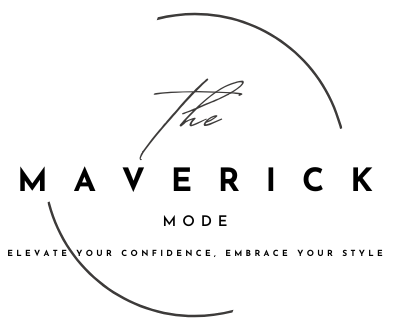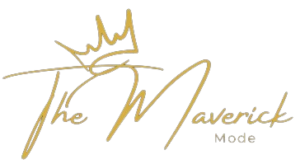Our obsession with feeling and looking younger just isn’t unique to the twenty first century. Actually, we have been on the lookout for ways to turn back the clock for hundreds of years.
Apparently Cleopatra bathed in milk To preserve their youth, women in the Elizabethan era wore thin slices of flesh on their faces Get rid of wrinklesand the Spanish explorer Juan Ponce de Léon is alleged to have looked for it mythical fountain of youth when he discovered Florida.
Although humans have long tried to combat aging, latest strategies for rejuvenating the body and mind became increasingly popular in the period immediately following World War I, as I write in my article current book. This included every thing from surgical procedures aimed toward this manipulate sex hormonesto on a regular basis beauty products, resembling Skin “foods” and moisturizers.
All of these methods promised completely different results. In the case of male hormone treatments, a patient can expect to restore lost fertility and energy. On a regular basis cosmetic products marketed almost exclusively to women promised a restored youthful appearance.
Differing types of rejuvenation have been considered suitable for men and girls. For men, the goal was to restore sexual function and economic productivity. For ladies, the return to youthful beauty was considered the best value. Prolonging life was a goal of eugenicists and physicians, but it surely was not a universal concern for would-be rejuvenators. Most as a substitute focused on extending their youth.
Barwick, W.R/ National Library of Australia
Electrical “therapies” that everybody could use at home were also popular. One of the most generally used electrotherapy devices in the late Twenties to Forties was the Overbeck rejuvenator, which was claimed to have the option to restore lost vitality by replenishing the body’s supply of electricity. Depending on what ailment the user wanted to treat, electrodes were attached to the body day-after-day and a small electrical current was administered.
The inventor of the rejuvenator was Otto Overbeck, an enterprising chemist who worked in the brewing industry. He wrote two books on the subjectthe first of which was published in 1925, claiming that his machine would produce positive leads to all conditions except infectious diseases and “deformities.”
Despite a study that concluded that the device’s power was not strong enough To realize an effect, electrotherapy continued to be very talked-about.
In 1912, Austrian physiologist Eugene Steinach developed a series of experiments to manipulate the levels of the “sex hormone” (testosterone) in guinea pigs. He concluded that the secretions of the testes control sexuality and sexual intercourse and behavior.
Based on these findings, Steinach then began performing partial vasectomies on men to increase testosterone production and “rejuvenate” his patients. But an article published in 1923 was skeptical about his workwhich “exerted a seemingly irresistible attraction to older people whose declining masculinity leaves them desolate and morose.”
Steinach generated great public interest in his work and inspired a loyal group of supporters inside the medical career. He was nominated several times for the Nobel Prize in Physiology between 1921 and 1938 for his groundbreaking work in the fields of endocrinology, urology and sexual health. He was also a key figure in the development of endocrinology. But he was also subject to strong accusations of quackery and deception.
“Rejuvenations”
The audience was fascinated by press reports about successful rejuvenations using his procedure. The so-called Steinach operation was a reasonably expensive treatment and have become fashionable each in the upper echelons of society and amongst many artists. This included Irish poet WB Yeats, who claimed the process inspired him latest artistic heights.

University of Washington: Special Collections/Wikimedia Commons
For many who couldn’t afford personal treatment at Steinach, an enormous range of rejuvenation options steadily became available. Recent diets, exercise programs and cosmetic products found a receptive audience who were afraid of aging. Many of these were promoted as essential components of a healthy life, which also promoted youthfulness.
For instance in his 1923 book rejuvenationSelf-proclaimed French anti-aging specialist Jean Frumusan identified a series of home habits aimed toward staying healthier for longer.
These included instructions resembling drinking a big glass of water upon waking and getting out of bed immediately. Frumusman also advised people to “eat slowly and sparsely” and to be “carnivorous at one meal, vegetarian at the next.” Frumusan too advocated regular fasting for twenty-four or 48 hours each to restore the body’s vitality.
Anti-aging cosmetic products, marketed primarily to women, were also popular. Cosmetics tycoons like Helena Rubinstein And Elizabeth Arden sold youthfulness to women of all ages. They and their contemporaries created a mass market for brand new anti-aging services embedded in twenty first century culture.
Rubinstein launched her “Hormone Twin Youthifiers” in the USA in 1931. These were two day and night creams that contained estrogen as a substitute “the vital glandular secretions of youth”.
Arden stopped using hormones in her products, but introduced her famous “Vienna Youth Mask” in 1927. This device used diathery (small electrical currents). Warm an individual’s facial tissues and with the aim of maintaining a youthful complexion.
The favored rejuvenation methods of the early 20th century differed significantly from one another – a testament to the wide range of ideas and theories on aging. Rejuvenation was one of the most outstanding and interesting topics of public interest in the Twenties and Nineteen Thirties, leading to society’s ongoing obsession with feeling and looking young.








